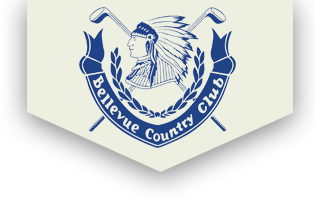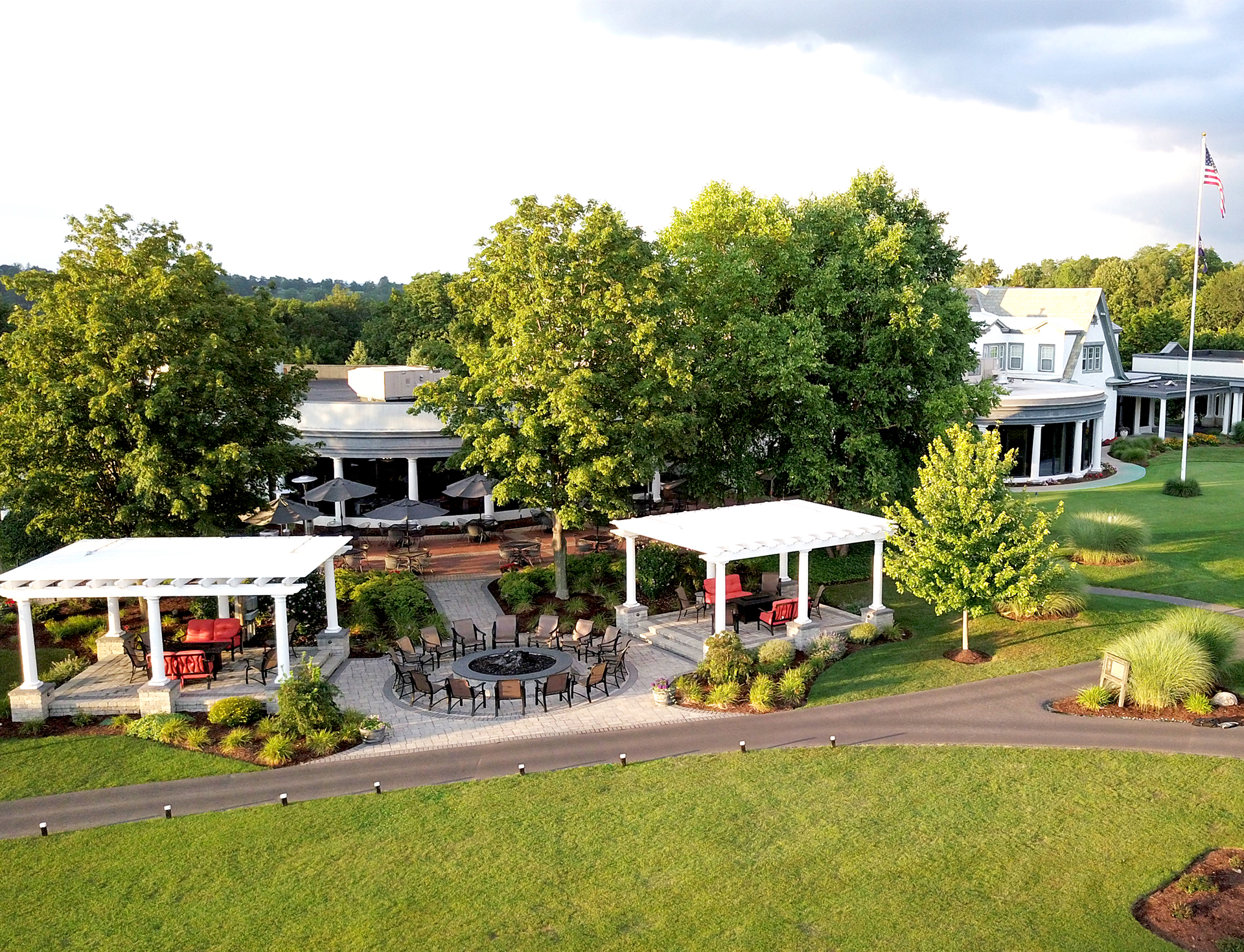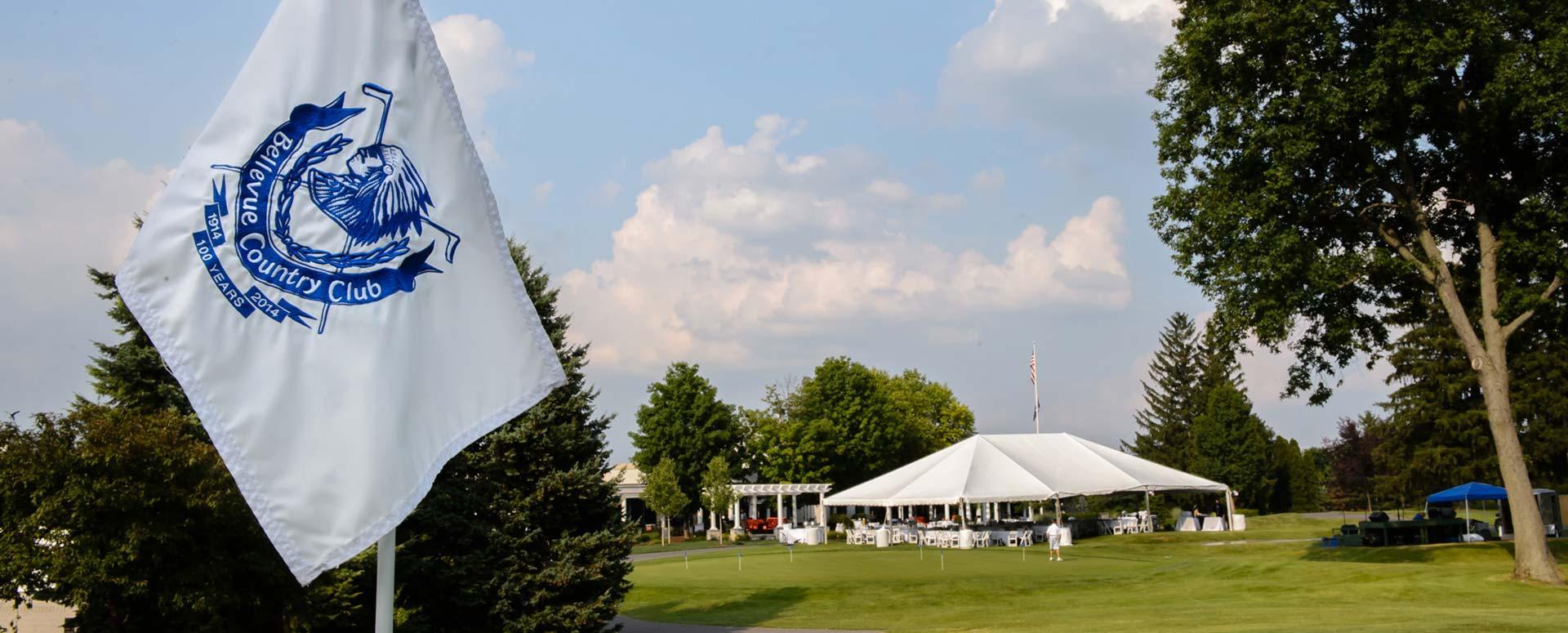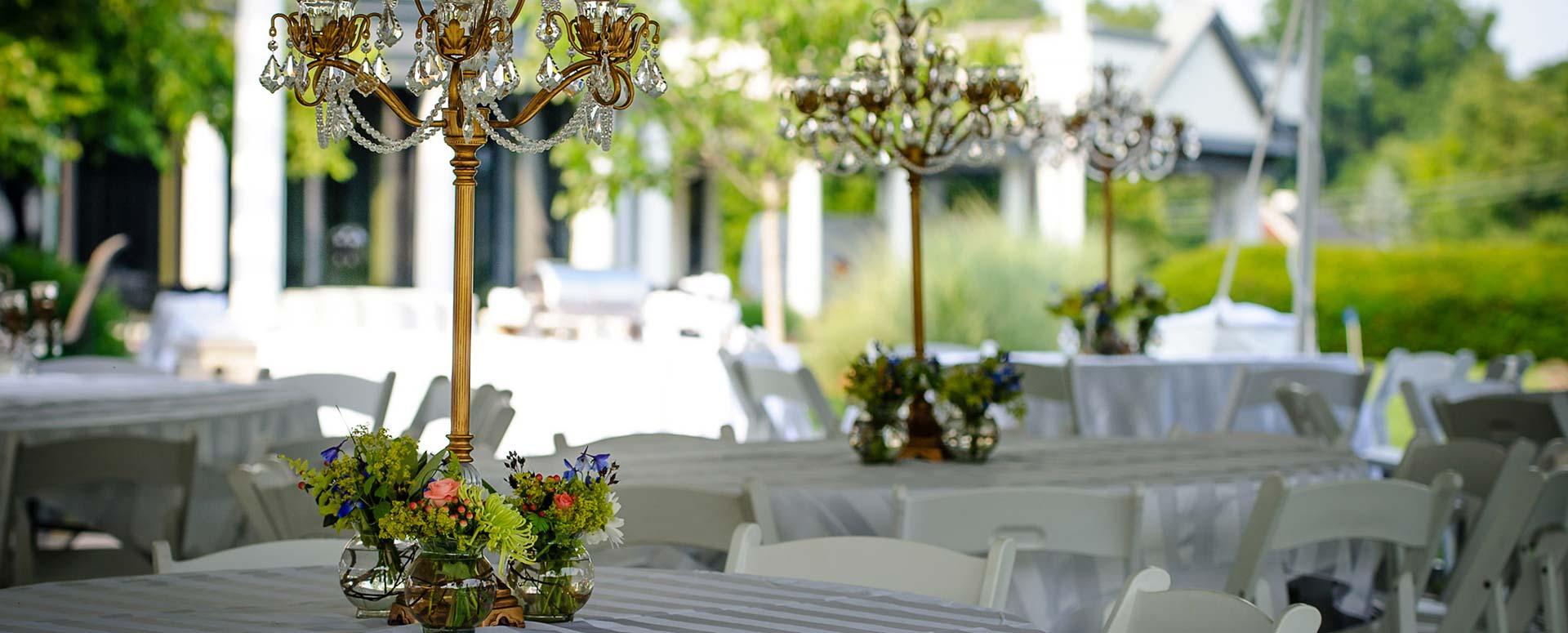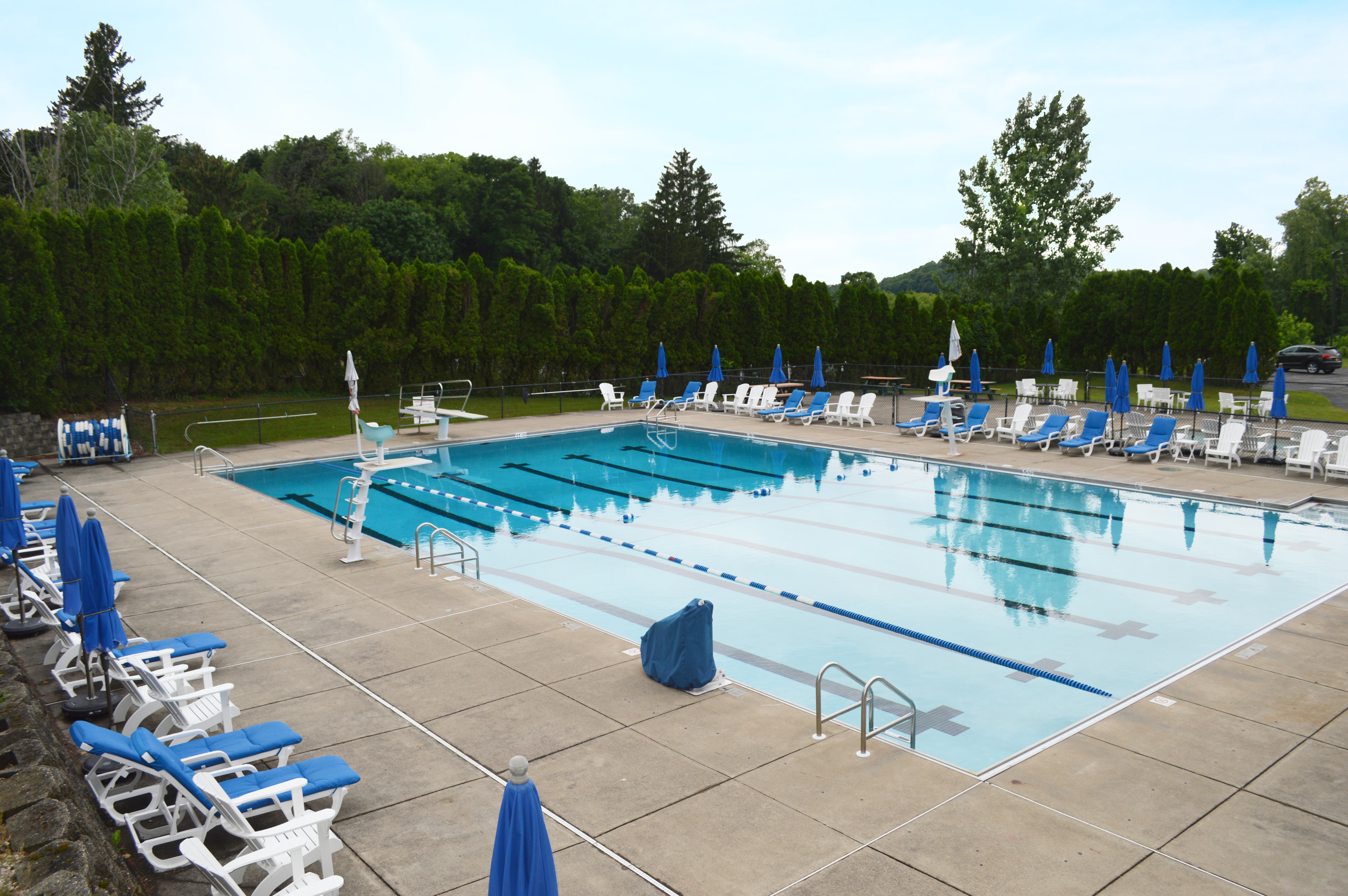History
Welcome to Bellevue Country Club's fabulous, classic clubhouse!
Credit this elegant, course-side view of our clubhouse to original architect Justice M. Scraford's 1917 design. Though we've added considerable space and amenities over the decades, we haven't altered the subtle rhythm of Scraford's windows. The classic columns ringing our Room on the Green. The natural slate roof. Crisp, white stucco. Or the sharply defined gables that symbolize the impressive, 160-foot rise to the top of our course. Inside, you will be treated to exquisite surroundings and every amenity you would expect from a modern, full-service private country club.
Commemorating a century of making memories.
Today, the historic Strathmore neighborhood on Syracuse’s west side is charmed with rows of (what are now considered) historic homes. One century ago, the mature trees and craftsman-proud houses lining each street had not been added to the blank canvas of rolling hills and farmland. Back then, it may have been easier to envision what the landscape could become. And for a small group of local golf enthusiasts, the grounds that would transform to be Bellevue Country Club were easy to see. So, in 1914, this group of golfies met at Schrafft’s Restaurant in downtown Syracuse. There, they conceived the establishment that has endured a century of growth and development and that is considered today to be a premiere golf course and country club and in 2013, granted designation as a Historic Place.
Officially, Bellevue was issued a Certificate of Incorporation on January 5, 1915, and creating a strong membership behind the development of the club was an important first step in building the establishment. At the time, the organization was made up of “prominent local, social, business and professional men”. A local jewelry wholesaler and Democratic Party leader, William Paige Hitchcock, was chosen as the first president of the executive committee for Bellevue. Other original stockholders, incorporators and directors included George D. Kirtland, vice president, C. B. Moak, secretary-treasurer, A. G. Velasko, Donald M. Dey Jr., Joseph B. Murphy, Frank M. Shattuck, Irving S. Merrell, Alan C. Fobes, Fred R. Peck, Judge W. G. Cady, J. S. Conway, Ralph Tiffany and E. A. O'Hara.
Before any ground would break, this board of regarded men stated their objective, “to establish and maintain with the county of Onondaga, golf links, tennis grounds, croquet grounds, rifle range, a club house and other lawful sports, games and amusements.” Envisioning a year-round destination, the club began a search for a suitable site, which it located on the hills to the southwest of the city. The 138 acre plot in the Onondaga Reservation was purchased from the Wadsworth family, who had been farming it since about the 1850s. Located just outside of the city lines, a cleaver headline in a January 15, 1915 issue of the debunked Syracuse Herald read: “New country club to have ideal location at the very door of the city.”
According to club founders, building a golf course in this location was ideal because it could be “reached by trolley in a comparatively short time by the business and professional man leaving his office for the day.” Further, the high elevation of the farm location also provided Bellevue with spectacular views. With the convenience of the location and the impressive views providing solid assets for the club’s development, what ultimately swayed the club incorporators was the excellent natural topography of the farm that made the location a perfect landscape for golf course design. Following the natural “hill and dale, wooded slope, rolling turf and level orchard lane” the course would capitalize on “a hundred subtle revelations of charms” and the high ground would afford “many natural hazards and bunkers for golf.”
So with the best location and a great assembly of innovators, Bellevue was well underway. The next milestone was to hire a master to engineer the course to its true potential. While many golf architects of the era designed a course and selected a piece of real estate to fit the design, the newly incorporate Bellevue required someone to design a course that could fit perfectly on the pre-selected piece of property the club already purchased. The master chosen by Bellevue was Scottish born Donald Ross.
Relying completely on the landscape, Ross used almost no artificial hazards and fairways that followed the contours of the land. The result was a challenging course that was ready to play in 1917. And to compliment the world-class course, Bellevue hired its own member, Justus Moak Scrafford, an architecture professor at Syracuse University to design the clubhouse. Although Ross selected the area of the property where the future clubhouse would be built, Scafford (who completed a number of high end commissions in the Syracuse area) was charged with creating the four-season structure that the club wanted for its members and their families.
The stately manor that remains the club’s primary facility offers views of the entire course. Through the decades, modern modifications have altered some of the interior, however, the clubhouse remains steadfast as Bellevue’s staple . . . . forever watching over the land and witnessing 100 years’ worth of frustrating putts, holes-in-one and countless other moments and memories on its timeless greens.
